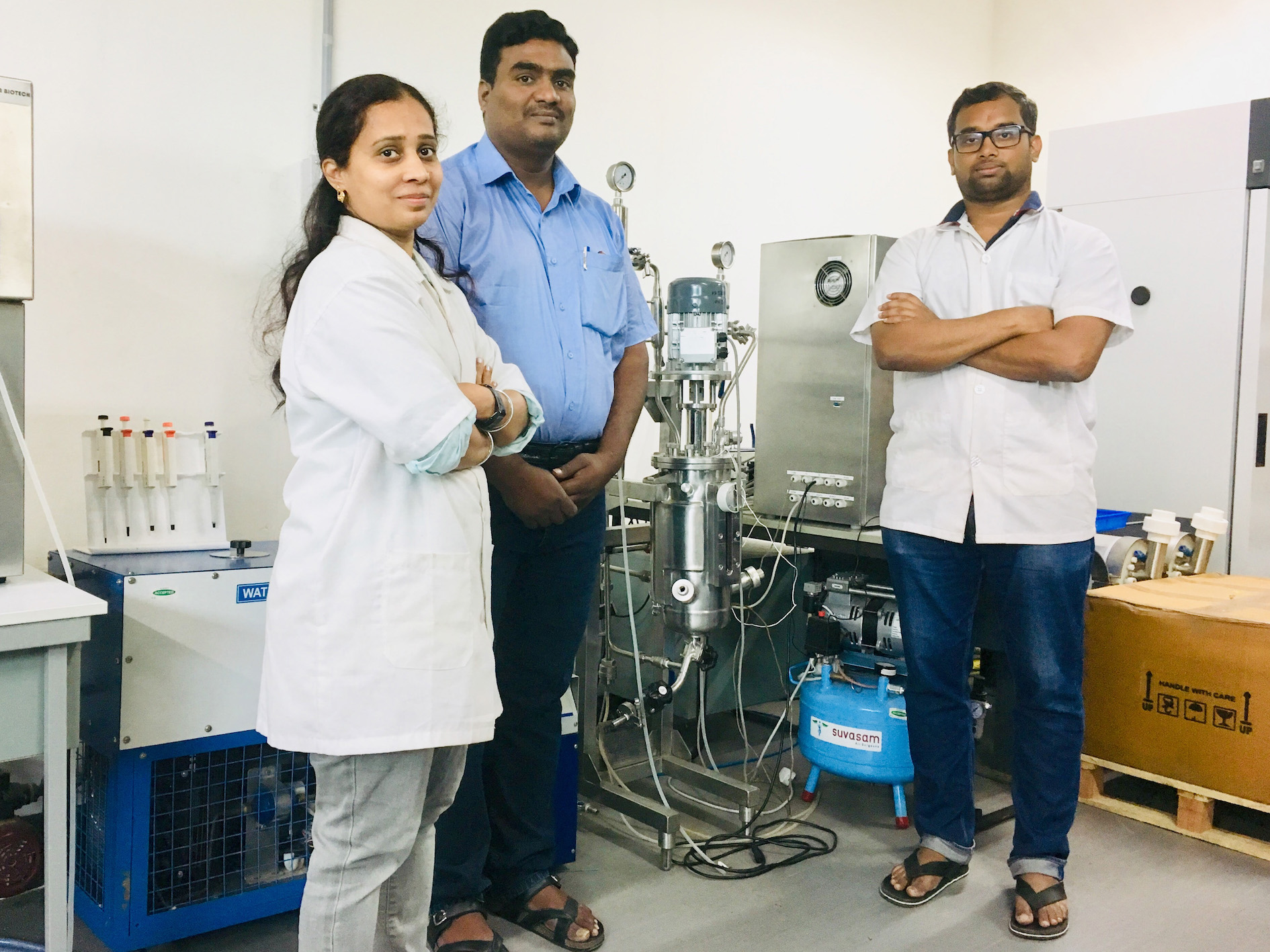IIT-H researchers reveal use of Antarctic fungi in treating Leukemia
February 19, 2019 | Tuesday | News
This work could lead to development of hemotherapeutic treatment methods that have fewer side effects than the existing methods
(L-R) Kruthi Doriya, Research Scholar, Dr.Devarai Santhosh Kumar, PI & Mr.Anup Ashok, Research Scholar at Industrial Bioprocess & Bio-Prospecting Lab
Indian Institute of Technology Hyderabad researchers working with scientists from National Centre for Polar and Ocean Research (NCPOR), Goa have isolated Antarctic fungi that contain L-Asparaginase, an enzyme-based chemotherapeutic agent used to treat Acute Lymphoblastic Leukemia. The isolation of L-asparaginase containing fungi from extreme environments could lead to development of new chemotherapeutic treatment methods that have fewer side effects than the existing methods.
Acute Lymphoblastic Leukemia (ALL) is the most common type of childhood cancer. In ALL, the bone marrow produces an excess of immature lymphocytes, a form of white blood cells. One of the most frequently used chemotherapy drugs to treat ALL is the enzyme L-Asparaginase. L-Asparaginase reduces the supply of asparagine, an amino acid that is essential for the synthesis of protein, to cancer cells. This prevents the growth and proliferation of the malignant cells.
The IIT Hyderabad Team includes Dr. Devarai Santhosh Kumar, Associate Professor, Department of Chemical Engineering and Dr. Asif Qureshi, Associate Professor, Department of Civil Engineering, along with their research students Mr. Anup Ashok, Ms. Kruthi Doriya and Ms. Jyothi Vithal Rao. The NCPOR team included Dr. Anoop Kumar Tiwari. Their path-breaking work has recently been published in Nature’s Open Source Journal, Scientific Reports.
Speaking about the need to discover other sources of pure L-Asparaginase, Dr. Devarai Santhosh Kumar, who is the Principal investigator, said, “Extensive purification steps are necessary before L-Asparaginase derived from E. Coli and E. Chrysanthemi is used as a drug to treat ALL. This increases the cost of the drug.”
The L-Asparaginase enzyme used for chemotherapy is currently derived from commonly found bacteria such as Escherichia coli and Erwinia chrysanthemi. These enzymes are always associated with two other enzymes, glutaminase and urease, both of which cause adverse side effects in patients such as pancreatitis, hemostasis abnormalities, central nervous system dysfunction and immunological reactions.
The Research team looked at psychrophiles as alternate sources of the enzyme. Psychrophiles are organisms that are capable of growth and reproduction in low temperatures in the range of −20 °C to +10 °C, such as those found in Antarctic regions.
These organisms have modified life processes that help them adapt to the extreme conditions of living. For example, psychrophiles have ‘anti-freeze’ enzymes that are powerful enough to be able to work at the freezing temperatures of the poles, unlike mesophiles that live in more habitable zones of the earth. The potency of these enzymes makes them promising as powerful drugs for diseases such as cancer.
Industrial Bioprocess and BioProspecting Laboratory Research Team, seeking alternate sources of L-Asparaginase, screened and isolated fungi collected from the soil and mosses in Schirmacher Hills, Dronning Maud Land, Antarctica. These fungi were found to have L-Asparaginase free of glutaminase and urease. The team isolated 55 samples of fungi, of which 30 isolates had pure L-Asparaginase. Maximum enzymatic activity was seen in a strain of fungus called Trichosporon asahii IBBLA1 and the enzyme activity was comparable to that of purified enzymes obtained from bacterial sources. The absence of glutaminase and urease would prevent the serious side-effects currently seen with the use of bacteria-derived L-Asparaginase.
“Fungal species have the ability to mimic the properties of the human cells, as both are eukaryotic in nature, which makes it easier for their usage in treatment of ALL”, the researchers write in their Nature Scientific Reports paper.










